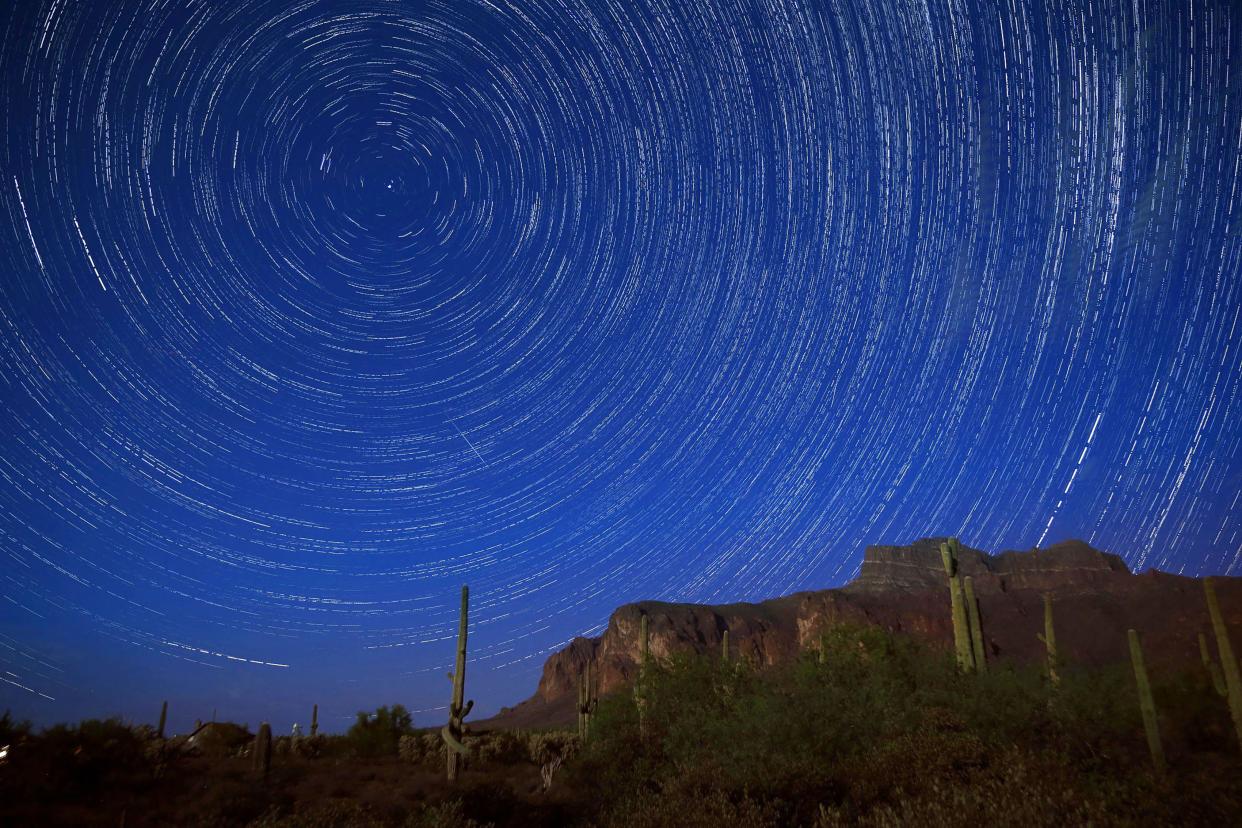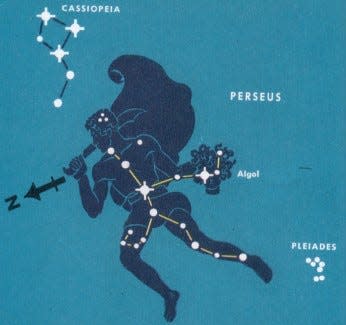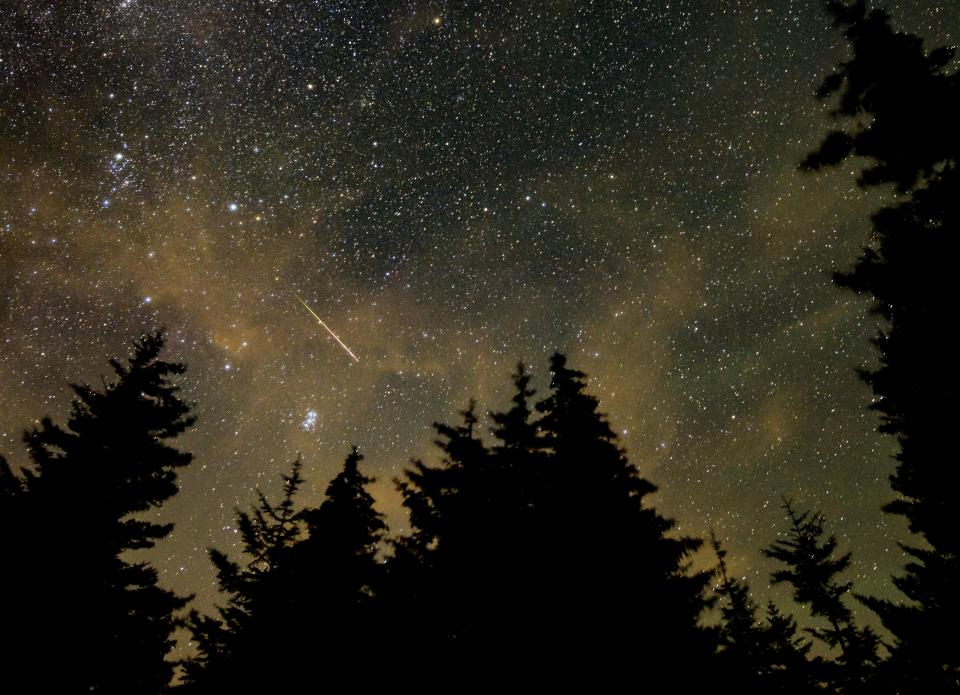Perseid meteor shower to peak this week, but will you be able to see it?

After a spring and summer full of astronomical events, the next spectacle — the Perseid meteor shower — will peak Thursday and Friday night, according to the American Meteor Society.
The bad news? The meteor shower probably will be hard to see.
That's because of a full moon, which will greatly diminish the visibility of the meteors, according to the National Aeronautics and Space Administration.
“Sadly, this year’s Perseids peak will see the worst possible circumstances for spotters,” NASA astronomer Bill Cooke said in a post on the agency's website. “Most of us in North America would normally see 50 or 60 meteors per hour, but this year, during the normal peak, the full Moon will reduce that to 10-20 per hour at best.”
As the full moon subsides, the Perseids will begin to wane Aug. 21-22 and cease completely by Sept. 1, according to NASA.
Astronomy: Missed Sunday's lunar eclipse? Here are 8 more sky events to check out later this year
What caused the Perseid meteor shower?
The Perseids are caused by Earth passing through debris, such as bits of ice and rock, left behind by the comet Swift-Tuttle, which last passed close to Earth in 1992, according to Space.com. The Perseids peak when Earth passes through the densest and dustiest area.
Perseid meteoroids (which they are called while in space) move quickly when they hit Earth's atmosphere, usually at 133,200 mph. Most of the Perseids are small and are about the size of a sand grain, Space.com explains.
Meteor shower named after constellation

Known for its spectacular light show, the colorful fireballs appear to radiate from the constellation of Perseus, named after the Greek hero.
In ancient Greek lore, Perseus is the son of the god Zeus and the mortal Danae, according to EarthSky. It is said that the Perseid shower commemorates the time when Zeus visited Danae in a shower of gold.
When can I see the meteor shower?

The best time to check out the show is between midnight and sunrise, according to NASA.
Space.com recommends people get a lawn chair and go to the darkest possible location to get a better view. Telescopes or binoculars are not needed to see the shower, but sky watchers should allow 30 minutes for their eyes to adjust to the dark.
The weather is expected to be clear and rain-free for the meteor showers. Thursday night will be mostly clear with a low of 57, according to the National Weather Service. Meanwhile, the skies will be completely clear on Friday night, with temperatures getting down to 55 degrees.
Micah Walker is the Dispatch trending reporter. Reach her at mwalker@dispatch.com or 740-251-7199. Follow her on Twitter @micah_walker701.
This article originally appeared on The Columbus Dispatch: Perseid meteor shower 2022: Here are your best chances for viewing

